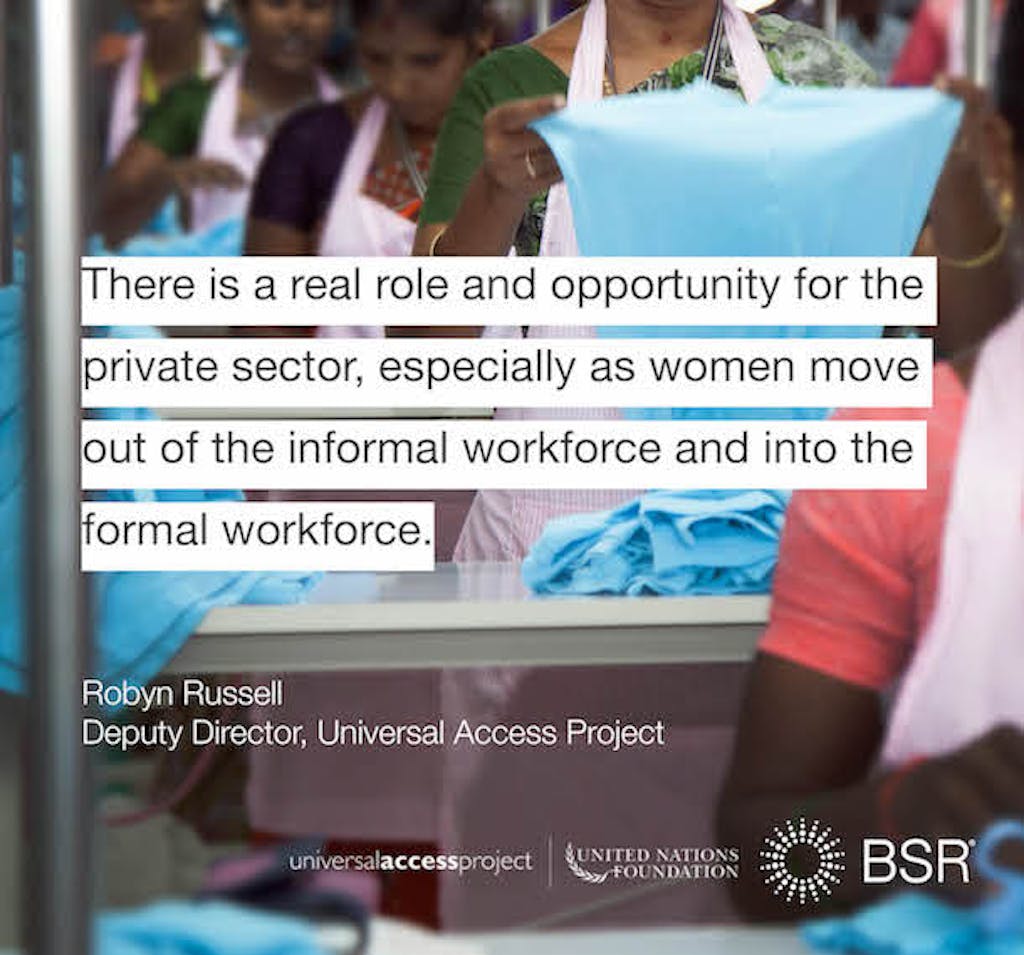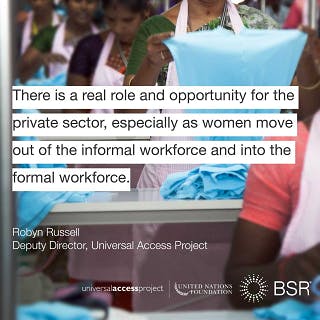
Meet Nadege: Nadege lives in Port-Au-Prince, Haiti with her three children and partner.
“My dream was to finish school. I wanted to be a nurse, but I didn’t reach that level,” Nadege told me. She was forced to drop out of school when she unexpectedly became pregnant at 17. Today, she works at an apparel factory that produces clothes for Levi Strauss & Co. and other U.S. brands to earn an income and provide for her children.
In developing countries, women just like Nadege are joining the formal workforce at incredible rates. But, in these same countries, there is still a significant gap in meeting the health and rights needs of women and girls, especially when it comes to family planning. In fact, 214 million women in developing countries have an “unmet need” for birth control – meaning they want to delay or avoid becoming pregnant, but are not using modern contraceptives.
Now is the time to connect the dots between women’s shift into the workforce and their unmet need for essential health care. Right now, the private sector – particularly companies with supply chains that employ large numbers of women such as apparel, textiles, agriculture, and electronics – has an incredible opportunity to reach millions of women in the workforce with the critical health information they want and need.
Businesses can leverage their networks, assets, and expertise to reach girls and women with health information and services, empowering these women and girls to reach their full potential and, in turn, become more engaged and productive at work.
This is a win-win for women and for businesses. Workplace health and well-being programs have been shown to significantly improve worker health and empowerment, helping businesses reap the benefits of a more engaged workforce: increased productivity, reduced absenteeism, and improved worker satisfaction, generating, in one study, a four-to-one return on investment in workplace women’s health programs.
It also sparks a global ripple effect – in fact, a 2015 report by McKinsey found that if women participated in the economy at the same rate as men, $28 trillion could be added to the world’s annual gross domestic product. That’s nearly as much as the GDP of the U.S. and China combined. But to reach our full potential, we must be healthy, empowered, and able to plan our families and futures.
But what does this investment look like in action?
Take Nadege, for example: She chose to participate in the factory’s women’s health program, facilitated by Share Hope, a social business producing women’s activewear, through BSR’s HERproject. Nadege attributes all of her knowledge about family planning to the education she received at work, saying, “Before, I just used to hear about [family planning] by word of mouth…but now it’s completely different. Share Hope has given us the information and an opportunity to learn, to understand, and to practice family planning.”
These voluntary services help the female workers plan their families, control their futures, and advance their careers. Management has seen the payoff for the bottom line, too: Cynthia Petterson, CEO of Share Hope, told me she has seen improvements in absenteeism, turnover, and productivity for the workforce since the project was implemented: “What makes workers happy is going to make for a more productive environment, and the business runs on productivity.”
At a macro level, as the world becomes increasingly interconnected, consumers are more and more aware of where their products come from and how they are sourced and made, making buying decisions based on the social and ethical credentials of brands. Companies have an opportunity to get ahead of the curve and invest in the health and well-being of the women workers in their supply chains or to disseminate health and empowerment information through their networks to reap the benefits of a healthy, productive workforce – all while attracting an increasingly values-focused consumer base and making progress toward the Sustainable Development Goals.
This is not just theoretical; together with our partners at BSR’s HERproject and at Population Council’s The Evidence Project, we have identified a clear path to action for companies to step up to the plate and invest in the health and well-being of their female workers. Dozens of companies are already leading the charge, from communications (MTV and Viacom) to fashion (Lindex and Levi Strauss & Co.), to your morning cup of tea (Twinings).
Programs like these can – and should – be adapted across sectors and scaled up globally to become the norm, fulfilling a basic human right for women and paying dividends for businesses. Now is the time to make these critical investments and unlock the potential of a growing female workforce around the world.

